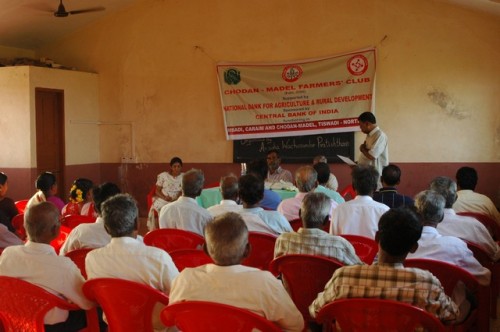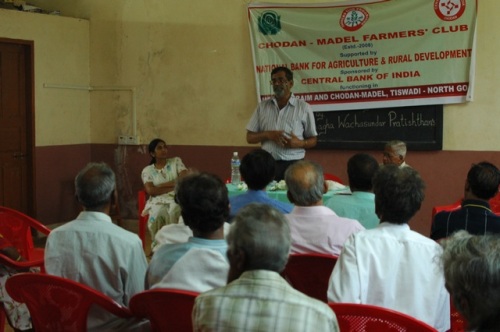
Site inspection and land preparation
At the start of the season the land was identified where the experiment would take place. Land preparation was undertaken with care to ensure all clumps of soil are broken down. Ploughing was carried out twice, once with a power-tiller and once with bullocks and a traditional plough.
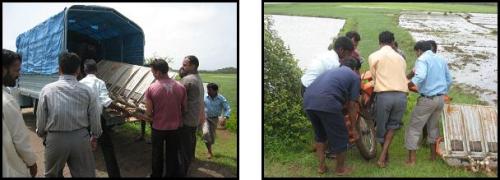
Offloading machinery
The machinery was brought from Pilar Nature Farms, run by the Society of Pilar. The Yanji Shakti mechanical transplanter is available for rent from this farm. It can also be bought at Goa Tractors (Mapusa). Presently, this machine can be purchased at a 70% subsidy, provided under a scheme of the Depratment of Agriculture.

Machine being assembled
The machine was then assembled on the site.
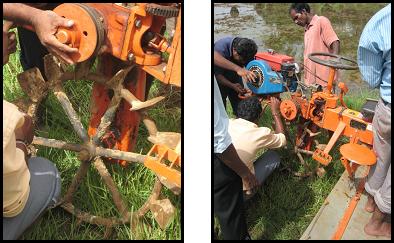
Wheel and motor being mounted
The wheel and the motor were mounted onto the machine.
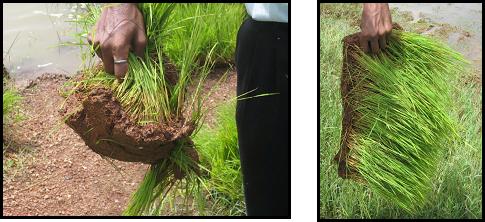
seedlings raised in a special nursery are used
Seedlings are raised in a specially prepared nursery so that they grow into a dense cluster, resembling a mat. This mat is then cut into appropriate sizes to be fed into the machine. As can be seen above, the seedlings are strongly held together and can be transported, in what resembles ’tiles,’ without any damage.
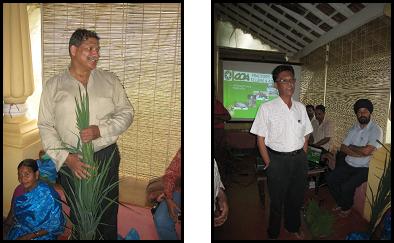
Greeting guests with the first harvest and presentations before the demonstration starts
Before the actual demsontration, several presentations were made by representatives of the Directorate of Agriculture, Pilar Nature Farm, SAMETI, Ela Farm, ICAR and Goa Tractors.
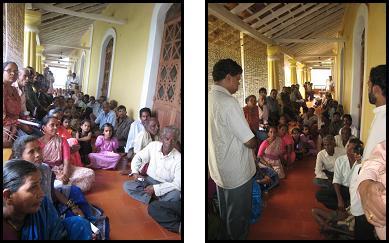
Presentations made before the demonstration
Over 45 people were present at the event. Mr. Remy Gass, who has a beautiful old Goan home, allowed the Club to use his verandah for the presentations.

Transplantation in progress
The demonstration was carried in three plots of land adjacent to one another. The soil in these plots is clayey and is said to be suitable for the operation of this machine.
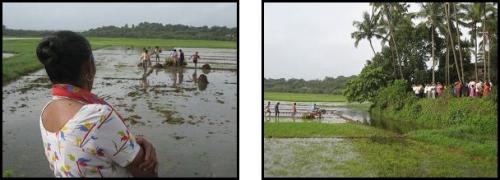
Watching the transplanter in action
Vandana watched as her field was being planted rapidly. others present also gathered eagerly to watch the machine in action.
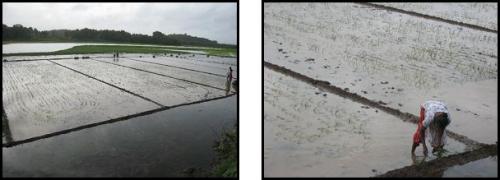
Transplantation com pleted and gaps are manually filled in
In 47 minutes, the machine managed to translpant the three plots. Areas around the corners that were left out (as the machine turns) were filled in manually by Vandana
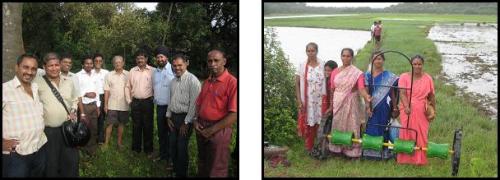
Participants at the workshop and the Drum Seeder still to be tested
From left to right: Frank Talbert (Goa Tractors); Celly D’souza (NABARD); Mr. Mahambare (Chorao Farmers Club); Ulhas Kavlekar (Karapur Watershed Association); Dr. Prabhudesai (ICAR); Mr. Abreu (Chorao Farmers Club); Mr. Verenkar (ZAO, Tiswadi); Mr. Amrik Singh Deul (Branch Manager, Central Bank-Chodan ); Dr. Fernandes (Asst. Director of Agriculture, FT); Mr. Chodankar (Chorao Farmers Club)
Also, the Drum Seeder has been given to Vandana as part of the experiment. It is to be used under drier conditions. The Club will test its usefulness during the next season.



